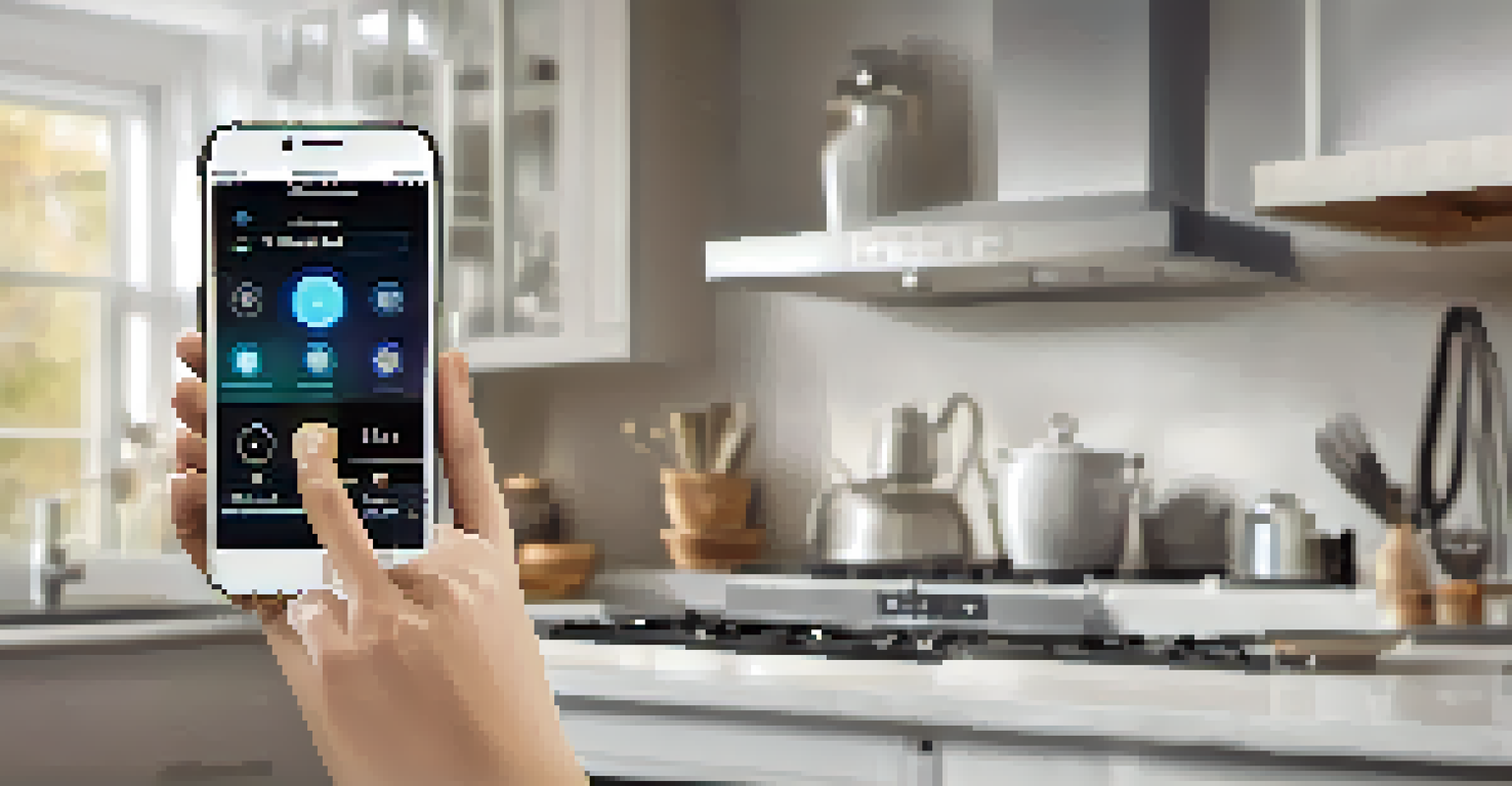Integrating Smart Home Tech with Existing Systems

Understanding Smart Home Technology Basics
Smart home technology refers to devices that connect to the internet and can be controlled remotely. Think of it as a way to enhance your living space, making it more convenient and energy-efficient. From smart lights to thermostats, these devices can transform your home into a hub of automation and control.
The future is already here — it's just not very evenly distributed.
When integrating smart tech, it's essential to understand how these devices communicate. Most smart devices use Wi-Fi, Bluetooth, or Zigbee, which is a wireless protocol designed for low-power devices. This foundational knowledge helps you choose the right devices that can coexist with your current systems.
As you dive into the world of smart home technology, you'll find that many devices are designed to work together. This compatibility allows you to create a cohesive system that enhances your daily routines, making everything from turning off lights to adjusting the thermostat as easy as a voice command.
Assessing Your Current Home Setup
Before jumping into new tech, take a moment to assess your current home setup. This involves identifying existing devices, systems, and networks that you already have in place. Knowing what you have will help you determine what smart devices can integrate seamlessly without causing disruptions.

Consider aspects like your current Wi-Fi strength and the types of devices you own. For example, if you have an older heating system, you might need a specific smart thermostat that’s compatible with it. Taking stock of your existing setup ensures that your investment in smart technology is both practical and effective.
Understanding Smart Tech Basics
Smart home technology enhances convenience and energy efficiency by allowing devices to connect and be controlled remotely.
This assessment phase also allows you to pinpoint areas where automation could be most beneficial. Perhaps you find that your outdoor lights are often left on, or your thermostat could use a more efficient schedule. Identifying these pain points can lead you to solutions that enhance your home's overall efficiency.
Choosing Compatible Smart Home Devices
Once you know your current setup, it’s time to choose smart home devices that are compatible. Look for products that explicitly mention compatibility with existing systems. For instance, many smart lights can easily integrate with standard light switches, allowing for a straightforward transition.
Technology is best when it brings people together.
Consider ecosystems like Amazon Alexa, Google Home, or Apple HomeKit, which offer a range of devices that communicate well within their systems. Choosing devices from the same ecosystem can reduce compatibility issues and enhance functionality. However, it’s also important to check if they will work with other devices you already own.
Reading reviews and consulting user forums can provide valuable insights into how well certain devices integrate with various home setups. Real user experiences often highlight potential challenges and solutions, giving you a clearer picture of what to expect.
Creating a Smart Home Hub
A smart home hub acts as the central brain for your connected devices, allowing them to communicate with each other seamlessly. Think of it as a conductor in an orchestra, ensuring every instrument plays in harmony. Popular options include SmartThings, Hubitat, or even a dedicated device like Amazon Echo Plus.
Setting up a hub helps streamline your home automation, enabling you to control multiple devices from a single app. This centralization can reduce the clutter of multiple apps and make your smart home experience more user-friendly. Plus, many hubs allow for automation routines, letting you set schedules and triggers for your devices.
Choosing Compatible Devices
Selecting smart devices that are compatible with your existing systems ensures a seamless integration and enhances functionality.
When selecting a hub, consider its compatibility with your chosen devices and whether it supports future expansions. A flexible hub will allow you to add new devices without needing to replace your entire setup, keeping your home tech adaptable as new innovations emerge.
Integrating Smart Devices into Daily Routines
Once your devices are set up, it's time to integrate them into your daily routines. This could mean programming your smart coffee maker to brew a fresh cup every morning as you wake up or setting up your smart lights to gradually brighten at sunrise. These small changes can significantly enhance your daily life.
Consider using automation features that many smart devices offer. For instance, you can set your thermostat to adjust automatically when you leave for work or have your smart speaker play your favorite playlist when you arrive home. These tailored experiences can foster a sense of comfort and convenience.
Additionally, don’t hesitate to experiment with routines that suit your lifestyle. You might find that automating your evening wind-down routine enhances relaxation, while morning routines can help you start your day on a positive note. The beauty of smart home tech is that it can adapt to your personal preferences.
Maintaining Your Smart Home System
Like any technology, maintaining your smart home system is crucial for optimal performance. Regular updates to your device software can enhance security and introduce new features. It's a good idea to set reminders to check for updates or enable automatic updates if available.
Additionally, regularly review your device settings to ensure they still align with your lifestyle. Changes in your schedule or household dynamics may require adjustments to your automation routines. Keeping your system in sync with your life ensures that your smart home continues to serve you effectively.
Maintaining Your Smart System
Regular maintenance, including software updates and performance checks, is essential for keeping your smart home running smoothly.
Don't forget to monitor the performance of your devices. If you notice any connectivity issues or devices not functioning as intended, troubleshooting promptly can prevent larger problems down the line. An engaged approach to maintenance keeps your smart home running smoothly.
Exploring Future Smart Home Innovations
The landscape of smart home technology is constantly evolving, bringing exciting innovations that can further enhance your living space. From AI-powered assistants to advanced security systems, staying informed about new developments can help you make informed decisions about future upgrades.
Consider subscribing to tech blogs or following industry news to keep your finger on the pulse of smart home trends. For example, advancements in energy-efficient devices or improved voice recognition technology can significantly impact how you interact with your home.

As you explore these innovations, think about how they can fit into your existing setup. Future devices may offer new functionalities that complement what you already have, ensuring your smart home continues to grow and adapt to your changing needs.